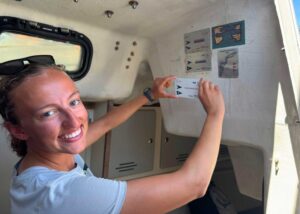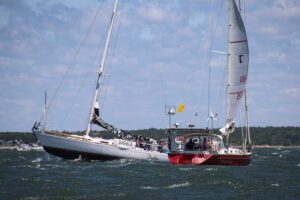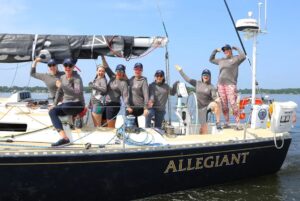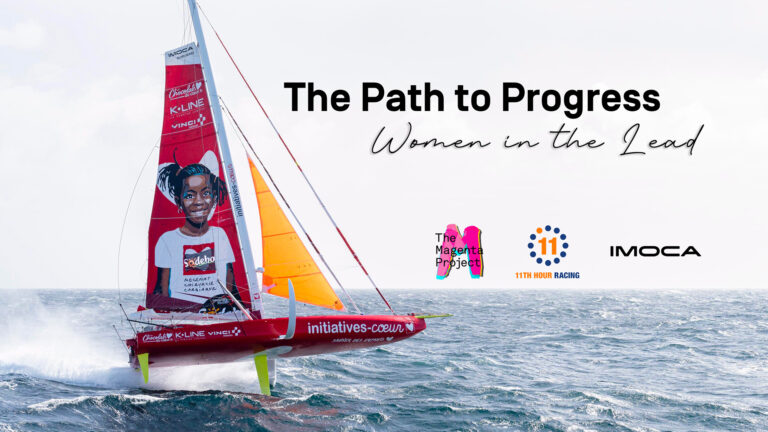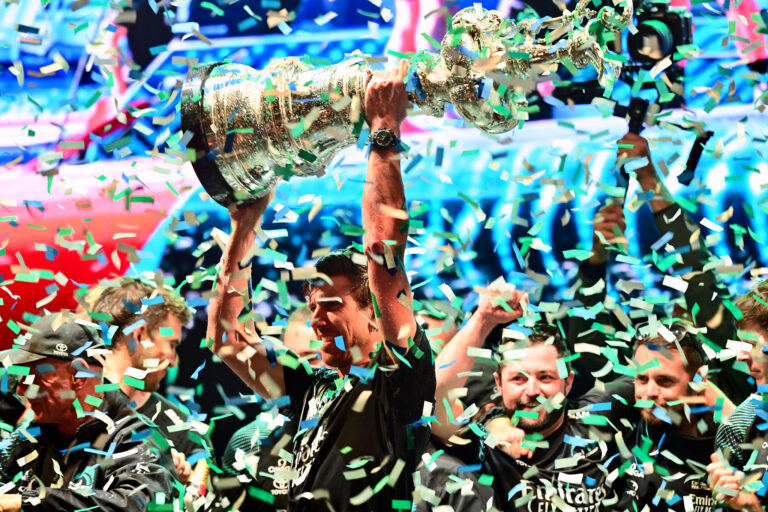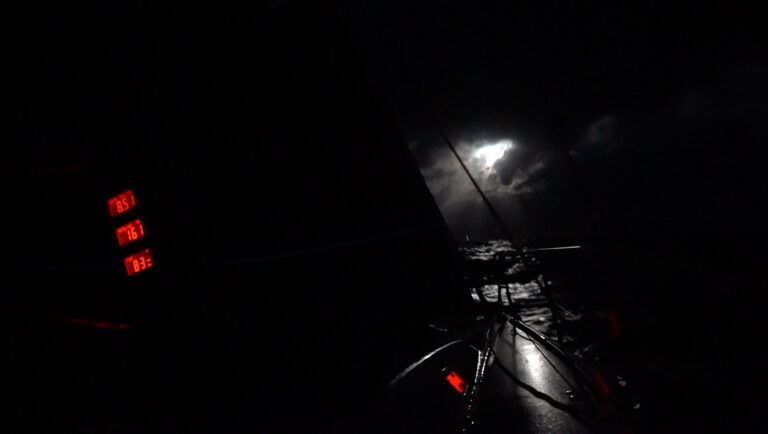
It’s a very different kind of sailing from what the fleet experienced in the course of a windy Leg 7, as the Volvo Ocean Race wends its way north from Brazil to Newport, Rhode Island.
As expected, the St. Helena High, which dominates the weather in the South Atlantic, has made for tough going as the seven teams often find themselves sailing hard on the wind in light-air conditions, searching for clouds and their accompanying puffs (and calms!). Although it represents a respite of sorts for a fleet that still bears both the emotional and physical scars of a tough Southern Ocean leg, it also makes for incredibly challenging racing, with the competitors once again often within sight of one another.
At press time, the entire fleet was essentially neck-and-neck, stretched out across 40 miles off the coast of Brazil, each boat hoping to get into the strong tradewinds first.
“Yesterday was all about making short-term losses to make long-term gains,” said Turn the Tide on Plastic skipper Dee Caffari. “That is what I was telling the team as we pushed out to the east while it was easy to gain miles in that direction. Today we are dealing with a sequence of rain clouds as best we can. Some have a shift in them, and some carry just an increase in pressure. We hope the latter are only for us, so we can accelerate on our competitors.”

“The big difference is how you manage the clouds,” agreed AkzoNobel’s Chris Nicholson. “We made a huge gain on Vestas and Mapfre then lost it all in a cloud. In a straight line and with the same breeze there’s not much difference between the teams. The deciding factor is getting through the clouds.”
Once it escapes the light airs of the high, the fleet should have nice trade wind sailing up until the doldrums, when as always, pretty much anything can happen. After that, the easterly trades in the North Atlantic will carry the teams past the Caribbean to where they will have to skirt the Azores High and figure out the best way to deal with the Gulf Stream: all the while keeping an eye out for any weather systems spinning toward them off North America.
The leg from Brazil to Newport has been a pivotal one in that past, and with the overall standings as close as they are thanks to recent breakages aboard Mapfre and a surging AkzoNobel and Team Brunel, this time around looks to be no different. Pity the navigators having to make sense of it all! The absence of Southern Ocean graybeard will make Leg 8 no less exhausting.
With any luck, the fleet is expected to begin finishing in Newport around May 11. For the latest position reports from the fleet, click here.
April 2018

